28 MAR 2025
Everything you need to know about storing & transporting LNG
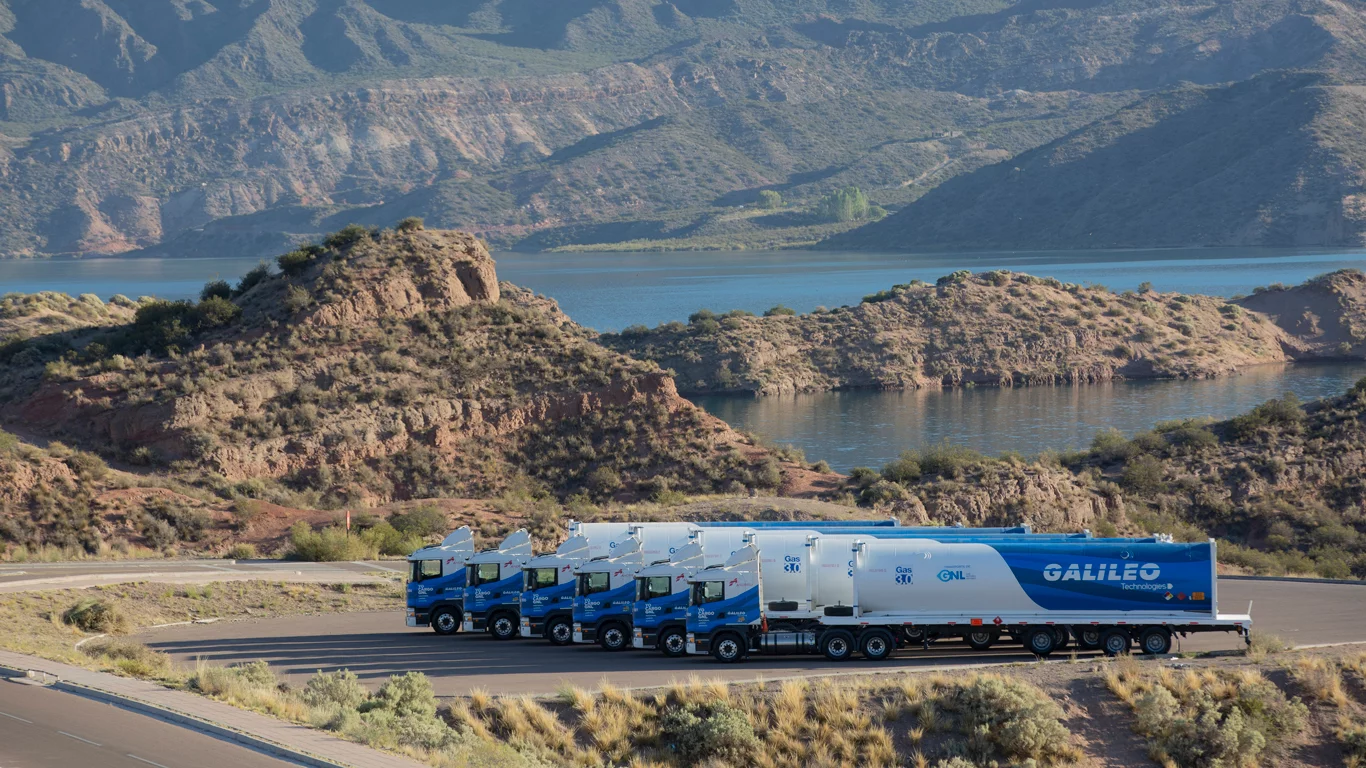
LNG transporting fleet in Mendoza, Argentina.
What Is LNG? | Main Uses of LNG | Storing LNG | Different Containers | Future Outlook | Conclusion
Liquefied Natural Gas (LNG) is on track to become one of the most influential energy sources in the coming decades. According to the World Energy Outlook 2023 by the International Energy Agency, LNG stands out with its clear advantages: cleaner combustion than other fossil fuels, abundant global supply, and the ability to complement renewable energy.
LNG is reshaping markets and ensuring reliable peak demand coverage worldwide.
Keep reading to explore what LNG is, how it’s used, and why proper storage is essential to unlocking its full potential.
What is LNG?
Liquefied Natural Gas (LNG) is natural gas—primarily methane—that’s been cooled to around -260°F (-162°C). At such low temperatures, its volume reduces by approximately 600 times, making it far more practical for storage and transportation over long distances.
In regions where pipelines are either non-existent or difficult to build, LNG offers a cost-effective solution for transporting large amounts of energy across seas and continents.
- Cleaner than other fossil fuels: LNG emits fewer greenhouse gases and less particulate matter compared to coal or heavy oil, making it an attractive choice for countries and industries aiming to reduce carbon footprints. (Greenhouse Gas Reporting: Conversion Factors 2023 - GOV.UK)
- Key driver of the global energy mix: The rapid economic expansion in Asia and the need to decarbonize heavy transport and industrial processes are driving new demand. Shell’s recent forecast suggests LNG usage could increase by 60% before 2040.
- Strategic U.S. role: The United States has become a major exporter of LNG, shipping substantial volumes to Europe, Asia, and the Americas. Updated statistics from the U.S. Department of Energy's November 2023 LNG Monthly report highlight sustained, high-level exports, with further growth expected.
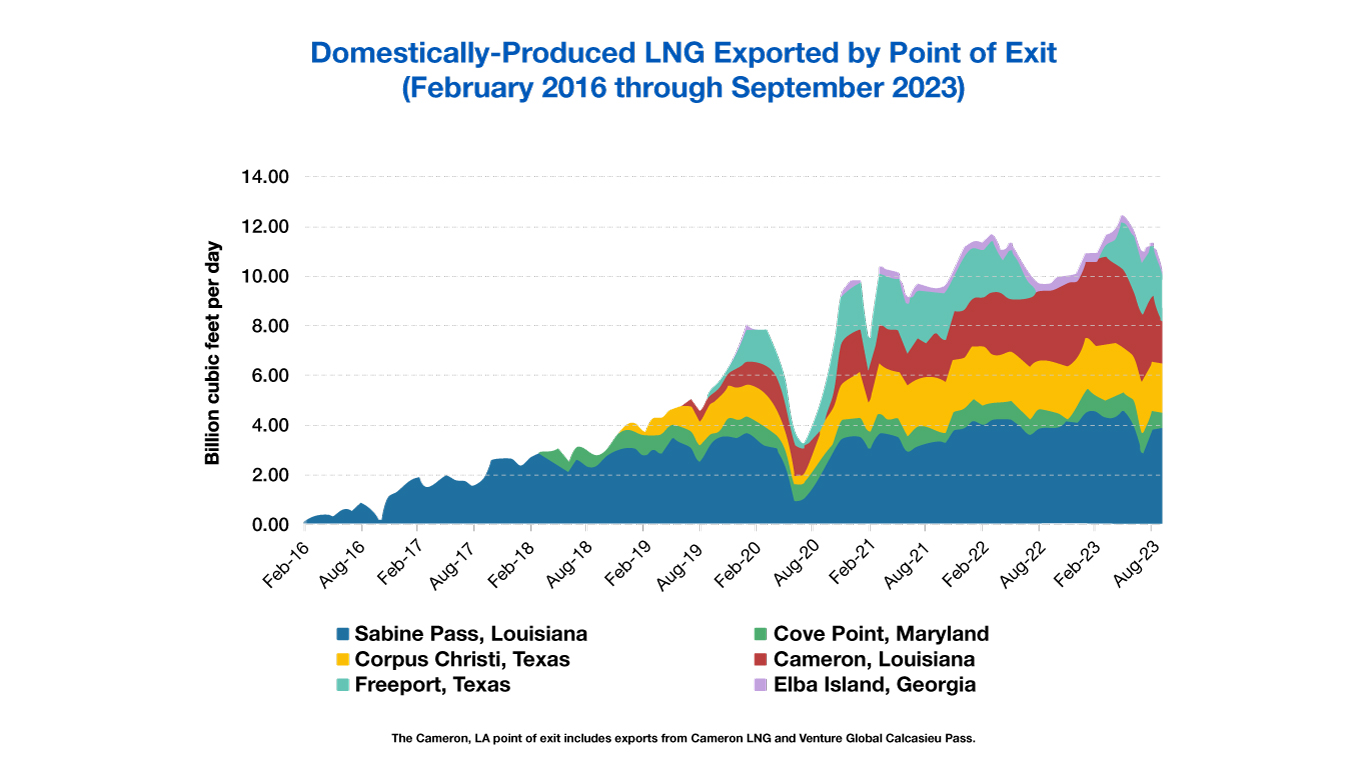
Main uses of Liquefied Natural Gas
LNG’s compact form makes it ideal for energy supply in areas where pipelines are impractical. Its key applications include:
- Industrial Processes:
Used in manufacturing, refineries, and large-scale production, LNG significantly reduces emissions compared to coal or fuel oil. - Power Generation:
LNG fuels natural gas power plants in regions without pipeline access, ensuring grid stability and peak demand coverage. - Transport Sector:
- Marine Shipping: Cruise ships, cargo vessels, and ferries are turning to LNG to meet emissions regulations.
- Heavy Road Transport: Long-haul trucks and buses are adopting LNG to reduce costs and environmental impact.
- Remote or Isolated Areas:
LNG is transported by truck, rail, or ship to off-grid locations, where it is regasified to meet local energy needs. - Domestic Heating and Cooking:
LNG can be regasified and distributed locally, providing a reliable and cleaner fuel alternative.
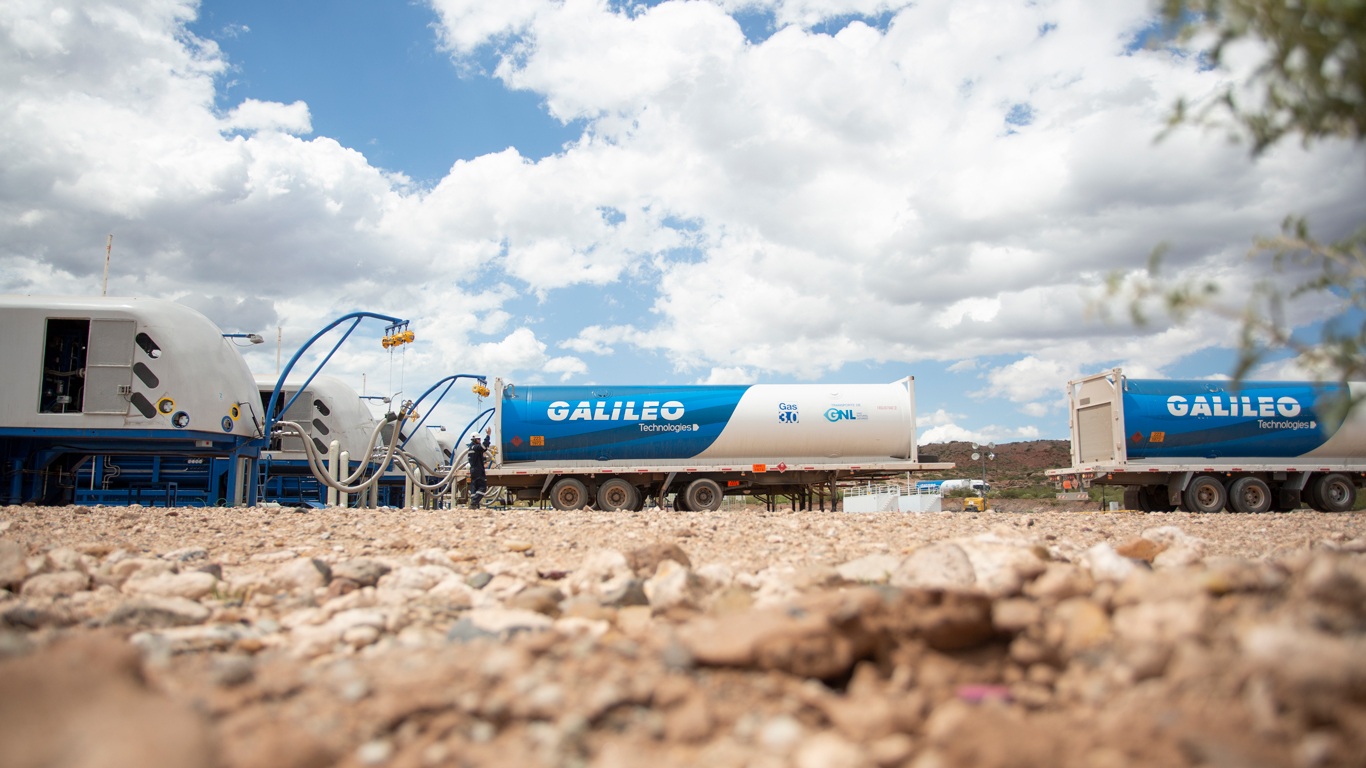
Storing Liquefied Natural Gas
Given that LNG must be kept extremely cold, specialized storage conditions are crucial. Proper LNG storage ensures safety while allowing operators to handle supply fluctuations and meet urgent demand spikes.
Why LNG storage is important
- Energy Security:
On-site LNG reserves offer a buffer during peak consumption periods or unexpected supply disruptions (e.g., extreme weather or pipeline outages). - Operational Efficiency:
Storing LNG allows large facilities to better manage boil-off gas (BOG)—the small fraction of LNG that naturally warms and evaporates over time. Modern storage solutions and reliquefaction systems capture this gas, minimizing waste and environmental impact. - Scalable Solutions:
Modular, skid-mounted storage tanks allow energy companies to scale their infrastructure based on current needs, making capital investments more flexible and less risky.
Real-world impact:
Paita, Peru: A notable export facility uses modular Cryobox™ systems and on-site LNG storage to supply Ecuador with a cleaner energy alternative. This project highlights how well-planned storage solutions can help entire regions transition from heavier fossil fuels and reduce emissions.
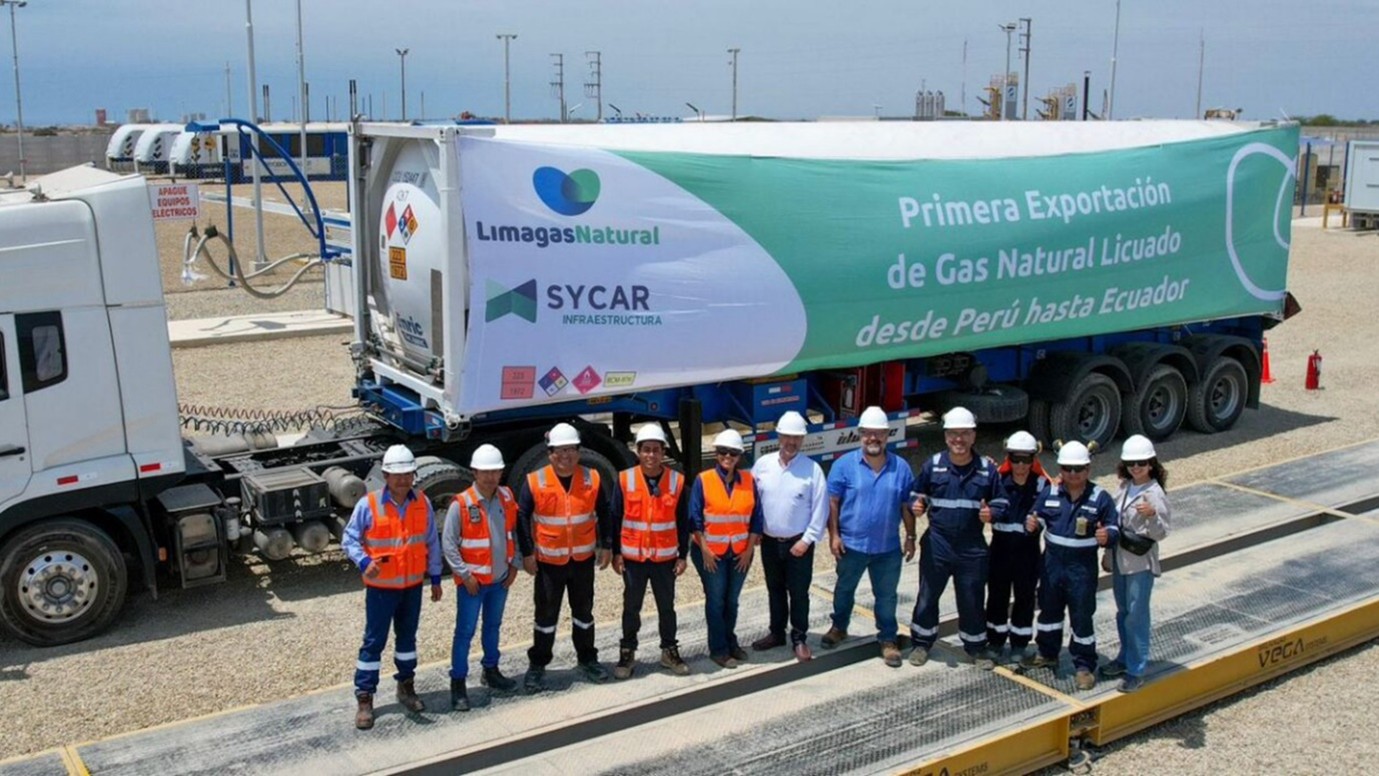
Different containers and their characteristics
LNG storage containers come in various designs and sizes to suit project needs, intended pressures, and geographic conditions. Here are the most common types:
-
- High Mobility: Mounted on trailers or railcars, isotanks can be relocated to new sites as demand shifts—ideal for short-term or emergency supply.
- Stackable: Some isotanks are designed to stack in rows and levels, optimizing space.
- Flexible Capacities: Smaller units range from 20 m³ to 60 m³, ideal for local industrial use or smaller generation facilities.
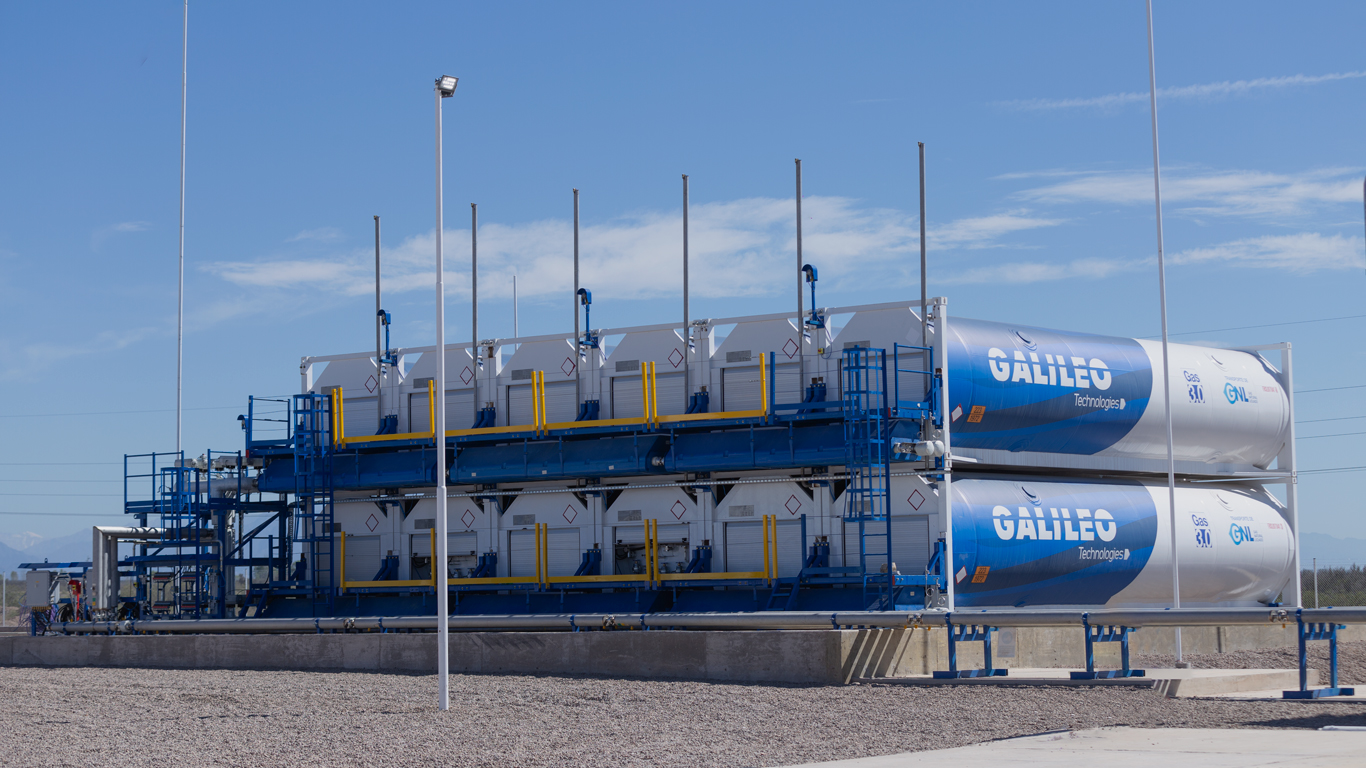
Vertical tanks provide higher storage capacity per cubic meter of LNG than horizontal isotanks, making them perfect for facilities with limited space. They can be grouped in sets of up to 32 units, forming a tank farm. We also supply all necessary accessories, cranes, gangways, and interconnecting skids for smooth integration.
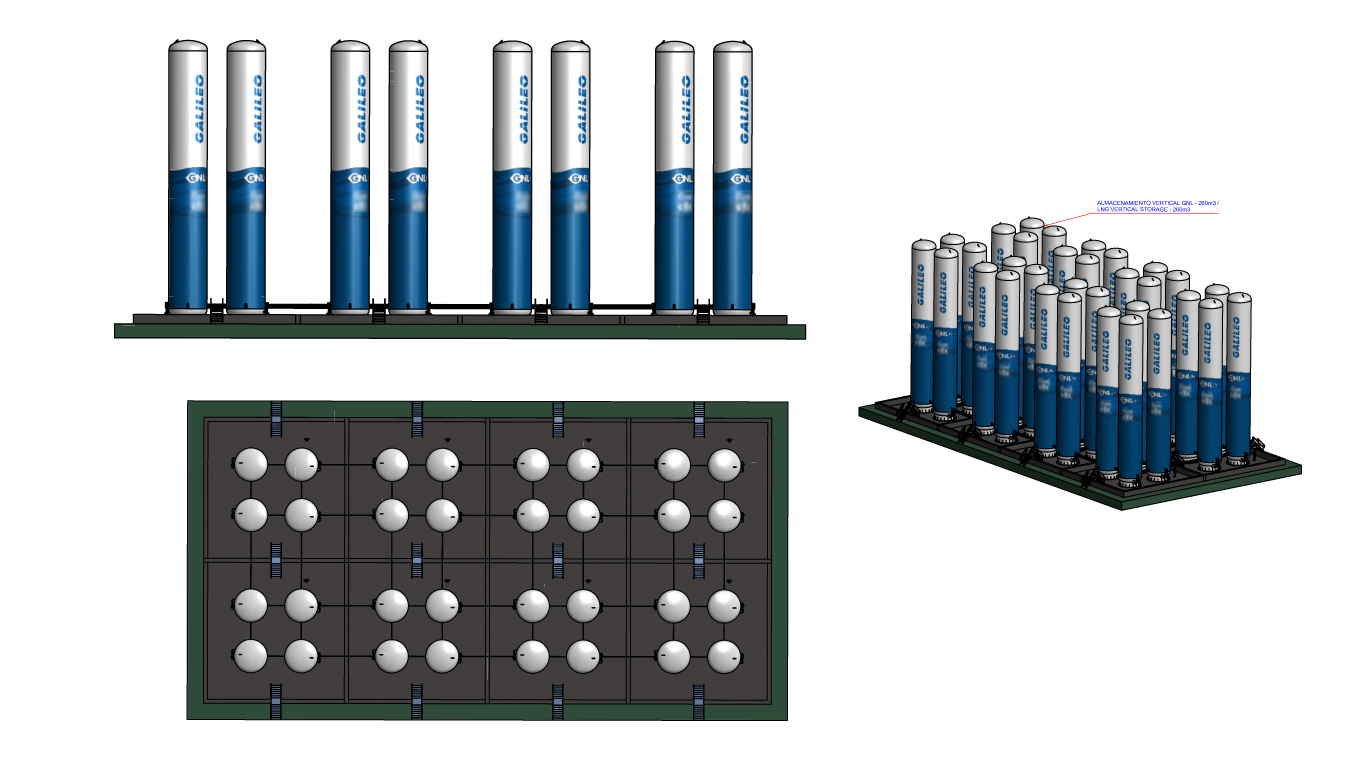
3. Above ground cryogenic tanks
-
- Double-walled construction: Featuring an inner tank (often stainless steel or 9% nickel steel) and an outer tank (made of carbon steel or concrete), these tanks have insulation between them to maintain low temperatures.
- Capacity range: Tanks can vary from thousands to tens of thousands of cubic meters. Some large-scale facilities exceed 30,000 m³ per tank.
- Pressure levels: Most tanks are designed for low-pressure storage (<10 kPa), with some configurations handling moderate pressure to reduce boil-off.
- Safety features: Spill protection basins, gas detectors, and pressure relief valves mitigate risks in case of unexpected temperature or pressure changes.
4. Enhanced Containment Systems:
-
- High nickel steel liners: Resistant to cryogenic temperatures and stress cracking.
- Concrete or outer shell: Provides secondary containment, crucial for protecting sensitive environments.
- BOG recovery: Facilities like Saint John LNG (Canada) use advanced re-liquefaction technology—compressing and cooling boil-off gas to store it again as LNG, reducing operational losses and emissions.
Beyond storage: transport and virtual pipelines
Even the best storage solutions are less effective without reliable transport methods. LNG carriers, trucks, rail tanks, and flexible pipeline substitutes (known as Virtual Pipeline® solutions) are essential for connecting production centers with global markets.
- Virtual Pipeline®: LNG is liquefied at the source, then trucked or shipped to remote destinations, where it’s regasified locally—mimicking the function of a pipeline without the huge costs or geographic limitations of long-distance infrastructure.
- Cryobox™ and Modular Skids: Portable, pre-assembled units integrating compression and liquefaction, ideal for quick deployments in areas with minimal infrastructure.
Future outlook
The global LNG sector is set to expand significantly as countries seek cleaner, abundant, and flexible energy solutions. Demand projections through 2040, particularly in Asia, show how natural gas is becoming central to decarbonization efforts. At the same time, advanced storage designs and modular technologies are enabling more efficient LNG handling, cutting both costs and environmental impacts.
Key Trends to Watch:
- Increasing technological innovation: New insulation materials, improved cryogenic pumps, and cost-effective reliquefaction modules.
- Integration with renewables: Hybrid systems combining intermittent sources like wind or solar with LNG-fueled backup.
- Regional alliances: Cross-border projects like the Paita (Peru to Ecuador) initiative boost energy security and stimulate local economies.
Conclusion
Liquefied Natural Gas has evolved from a niche fuel into a cornerstone of global energy resources, powering industries, transportation, and homes with cleaner combustion and more efficient storage and transport solutions. Understanding LNG’s formation, uses, and the importance of advanced storage technologies will help industry stakeholders make informed decisions and stay ahead in the competitive, low-carbon energy landscape.
As demand continues to rise, investing in secure, high-performance LNG storage and transportation solutions is key to reducing environmental impact and maximizing energy security.
Sources:
- US Department of Energy (DOE) & Energy Information Administration reports on LNG exports and capacity (energy.gov & energy.gov)
- European Commission / ACER analysis of EU LNG import trends and infrastructure (acer.europa.eu)
- Shell LNG Outlook 2024 and press releases for global LNG demand forecasts (accr.org.au)
- BP Energy Outlook 2024 (Current Trajectory vs Net Zero scenarios) via Reuters summary (reuters.com)
- International Energy Agency – World Energy Outlook 2023 and Gas Market Reports for LNG supply-demand balance (iea.org)
- Rystad Energy research on LNG investment and supply growth (press release, 2023) (rystadenergy.com)
- Altenergy and trade publications on LNG technology advancements (FSRUs, storage tank innovation) (altenergymag.com)
- Academic review on LNG technological innovations (WJARR, 2024) (wjarr.com)
- UK HSE and government resources on LNG safety and emissions (COMAH regs, DEFRA GHG factors) (hse.gov.uk & nationalgrid.com)
- Case study documentation: Reuters and company reports on Qatar’s North Field expansion (reuters.com)
- DOE/IEEFA on U.S. LNG export capacity (energy.gov)
- NOPSEMA/Australia reports via news on Prelude FLNG (energy.gov)
- EU Commission on FSRU deployments (acer.europa.eu)
- Project releases on LNG Canada (offshore-energy.biz)